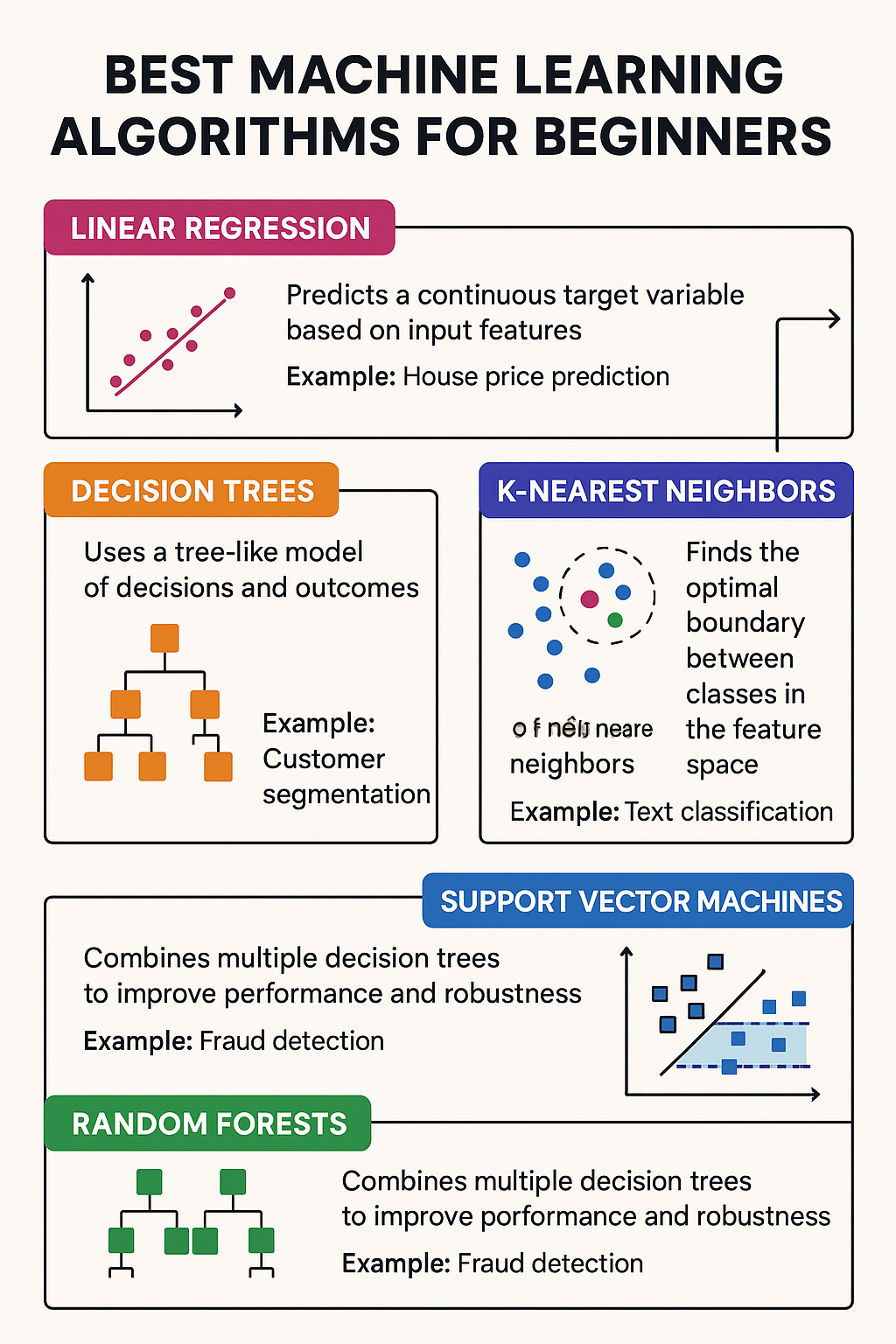Machine learning might seem complex, but starting out doesn’t need to be hard. If you’re new to this field, you should know that some algorithms are easy for beginners to grasp and use—even if you don’t have a strong math or coding background. Let’s look at the simplest machine learning algorithms and see what they do in plain language.
What Are Machine Learning Algorithms?
Understanding Smart Machines
At its heart, a machine learning algorithm is a way for computers to learn from data and make guesses or choices without someone writing code for every possible scenario. Instead of coding every single task, we “teach” the machine with data, and it works things out by itself.
1. Linear Regression
Perfect for Number Predictions
Linear regression stands out as one of the simplest and most common algorithms. It helps you guess a number—like how much a house might cost—based on related factors such as its size where it’s located, or how many bedrooms it has.
- Works best for: Estimating prices forecasting sales
- Why it’s easy to grasp: It draws a straight line that fits the data best, which you can see and understand without much effort.
2. Logistic Regression
Excellent for Yes/No Guesses
Despite its name logistic regression has an application in classification problems—not regression. It helps predict outcomes that are binary, like whether an email is spam or not, or if a customer will purchase a product.
- Best for: Spam detection, customer behavior prediction
- Why it’s simple: It provides results in terms of probability making it easy to grasp.
3. Decision Trees
Like a Flowchart to Make Decisions
A decision tree divides your data into branches based on conditions (like “Is income > $50K?”). It keeps splitting until it reaches a final decision. It functions just like a decision-making chart you might sketch on paper.
- Best for: Giving the green light to loans, making medical calls
- Why it’s easy to grasp: You can see it, it makes sense, and you can follow how decisions are made.
4. K-Nearest Neighbors (KNN)
Follow the Crowd
KNN is a laid-back but clever algorithm. It sorts new data by how much it looks like nearby info. If most people around you dig action flicks, KNN will say you do too.
- Best for: Systems that suggest things spotting patterns
- Why it’s easy to grasp: It doesn’t need complex learning—just comparing stuff.
5. Naive Bayes
Clever Guesses Using Odds
Naive Bayes relies on probability to make choices and excels at processing text data. It’s named “naive” because it assumes all inputs are independent even when they’re not—which works well in many situations.
- Best for: Spam filtering, sentiment analysis
- Why it’s simple: It’s straightforward and very quick.
6. Support Vector Machine (SVM)
Drawing the Best Line Between Categories
SVM functions by creating the best boundary (line or plane) that divides different groups in your data. It’s effective when the groups have clear separation.
- Best for: Sorting pictures, spotting faces
- Why it’s easy: You can see how it works with clean data.
7. K-Means Clustering
Spotting Groups in Data
K-Means is different from the rest. It doesn’t need labeled data. It looks for patterns or things that are alike and puts the data into groups. It’s like sorting books by type without reading their titles.
- Best for: Grouping customers studying markets
- Why it’s easy: It makes sense—put similar stuff together.
